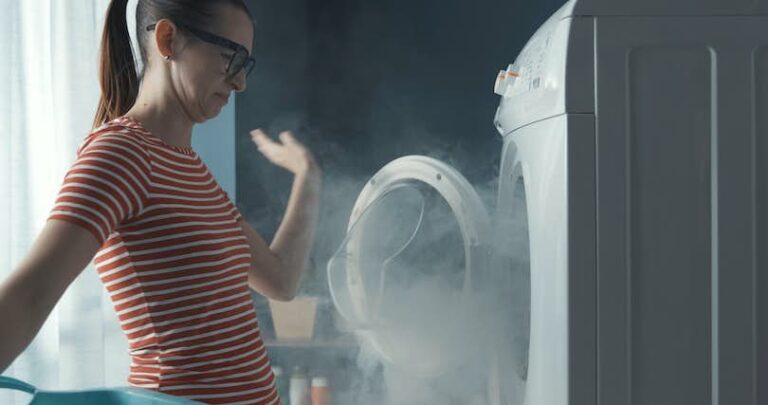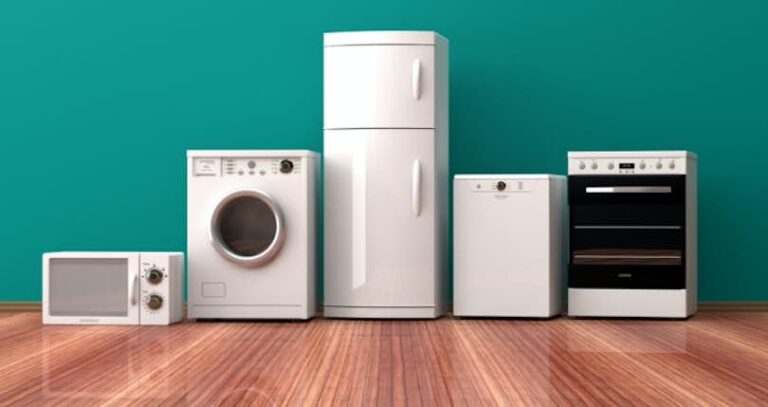U.S. households emit carbon and other greenhouse gasses at a rate four times higher than the global average — with more than a third of our emissions coming from home energy consumption. What's more, energy costs take up more than 8 percent of the typical low-income household's earnings.
To help combat both the environmental and financial costs of our energy use, the Biden administration recently introduced measures to drastically reduce greenhouse gas emissions in the U.S. — including in our homes. The bill, known as the Inflation Reduction Act, includes thousands of dollars in tax breaks and rebates to help homeowners pay for energy-efficient upgrades in their homes.
While many of the bill's incentives are aimed at large-scale home improvements — like installing solar panels or swapping out your appliances — there are also plenty of simple changes you can make to reduce your output and save money in the process.
Here are 16 ways to reduce your carbon footprint at home.
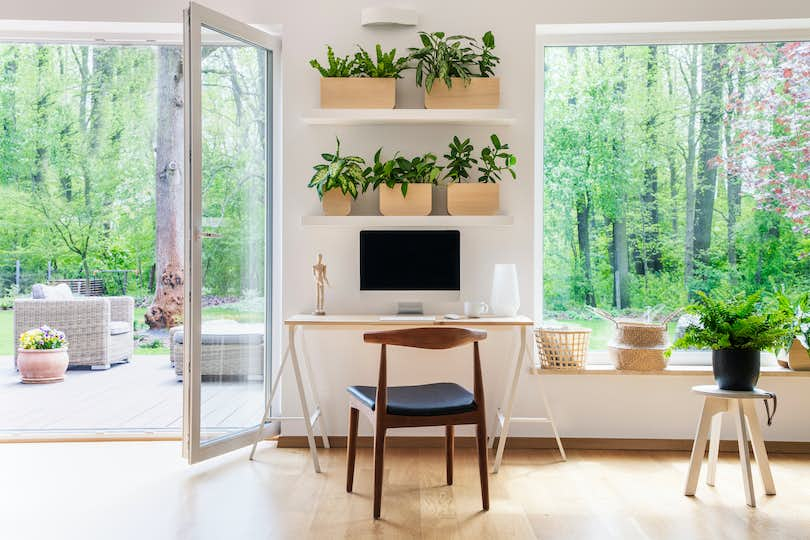
In the Kitchen
1. Use more rags and fewer paper towels
This doesn't mean you have to cut out all paper towels — it just means to use less. If you're looking for a no-cost solution, you can always recycle old T-shirts by cutting them up to make rags and washing them in a batch whenever you run out.
2. Clean the fridge coils
Get a long, flexible brush like this one and use it to clean any lint or junk around the coils in your refrigerator. Maintaining your fridge will help it use less energy to keep your food cold.
3. Plant herbs this spring

There's no need to buy basil or thyme that was exported from a farm to your grocery store when you can snip a few sprigs from your own herb garden. This also makes for a fun activity with the kiddos!
4. Get a recycling bin
You've probably already got one in your garage or on the side of the house. Still, it's a good idea to keep a smaller bin in your kitchen so you can easily recycle things like water bottles and soda cans instead of putting them in the trash.
Also, keep in mind what you're recycling. A surprising number of things are NOT recyclable and, if thrown in your bin, can ruin recycling equipment. These items include:
- Plastic grocery bags
- Paper coffee cups
- Juice boxes or frozen food boxes
- Colored paper
- Anything with food residue
- Incandescent lightbulbs
- Polystyrene foam
- Bubble wrap
- Most lids
- Plastic utensils
5. Add a compost bin
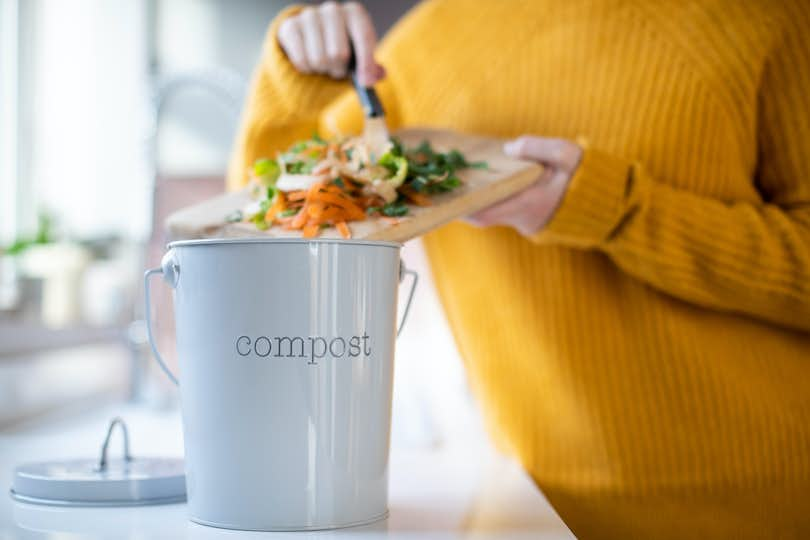
Perhaps initially, this doesn't sound like your thing, but hear us out. Composting can be easy and even odor-free. Plus it keeps waste out of landfills and creates a nutrient-rich additive for your garden. Store scraps in a freezer bag or a specialized countertop bin, and watch your trash loads get much smaller.
In the living areas
6. Exchange lights for LED or CFL bulbs
While it may be tempting to save a few bucks on incandescent lights, switching to LEDs or CFL bulbs will save you money over time. Most incandescent bulbs last only a year or so, while this $20 16-pack of LEDs will last 13 years each.
7. Upgrade to a smart thermostat
With a handful of options on the market, it's easier than ever to make the switch to a smart thermostat. Models like the Nest Learning Thermostat have a setting like eco-mode that automatically drops the temperature when you're not home. HVAC systems are the number one energy consumers in our homes, so investing in a smart thermostat that learns the temperature you like for different times/days and programs itself will save you a lot on your energy bills.
8. Update your HVAC system
Changing out your HVAC will be costly. However, the long-term benefits outweigh the upfront cost. Air conditioners today have never been more cost-effective and energy efficient, so your energy bill doesn't have to go up while you're cooling down. And if you choose to go with an Energy Star-certified system, you'll qualify for a $300 tax credit.
9. Turn off power strips
You probably already own a few, but did you know that if you flip them off when you're done using the things plugged in, it'll save you big on your energy bills? Everything from TVs to phone chargers can act as "vampire appliances," leeching energy while not in use.
In the laundry room
10. Use dryer balls instead of sheets

It's time to ditch your dryer sheets! They're not cost-effective, cannot be recycled, and contain harsh chemicals. Instead, use wool dryer balls to speed up drying time and fluff out wrinkles. The best part? They last forever.
11. Invest in a heat pump dryer
After HVAC systems, appliances are the real energy consumers in your home. One of the most economical innovations on the market is a heat pump dryer. Unlike traditional electric dryers that rely on a heating element, heat-pump dryers extract heat from a room's air and heat the air inside the dryer. Heat pump dryers can reduce energy use by at least 28% compared to standard dryers. Additionally, they are easy to install since they don't require ventilation and are more forgiving on your clothes.
In the bathroom
12. Swap out your showerhead
Showering accounts for 20 to 30% of household water usage. Iinstalling a low-flow showerhead can decrease your water consumption by 40%. It also reduces carbon dioxide emissions because the demand for hot water lessens, resulting in lower CO2 dispersed in the air. Look for a model with good reviews and ensure that it specifies a powerful spray despite its restricted water use.
Around your home's exterior
13. Install a drip irrigation system
Keeping your yard healthy and green isn't just about looks. Vegetation helps regulate your home's temperature, acts as a windbreak, and contributes to cleaner air. Drip irrigation systems disperse water slowly and evenly, focusing water directly on the roots where it's needed. This process saves you electricity by eliminating pumps and minimizes waste through evaporation. A well-designed drip irrigation system can save up to 80% of the water used in other types of irrigation systems.
14. Turn down your water heater
The typical setting for a residential water heater is 140º Fahrenheit, but that's unnecessarily hot. To test: Turn on the hot tap in your shower but not the cold tap. Is it scorching? Are your fingers burning? Try turning the heater down to 120º Fahrenheit so the water doesn't get any hotter than your ideal temperature.
15. Insulate your home correctly
A well-insulated home holds in heat properly, meaning it'll take less energy to reheat your living space when needed. It also helps to keep things cool during warmer months. And soon, thanks to the newly passed Inflation Reduction Act, home buyers will qualify for up to $8,000 in rebates to make energy-efficient upgrades to their homes, such as adding attic insulation or sealing off spaces around ductwork and plumbing.
A well-insulated roof and walls are an excellent place to start, but don't forget about windows as insulation, too. High-performance windows make a huge difference. Windows account for 50% or more of lost energy, so you're saving energy by replacing your old ones with Energy Star-certified windows. You can also qualify for a 10% tax credit (capped at $200).
16. Invest in solar panels
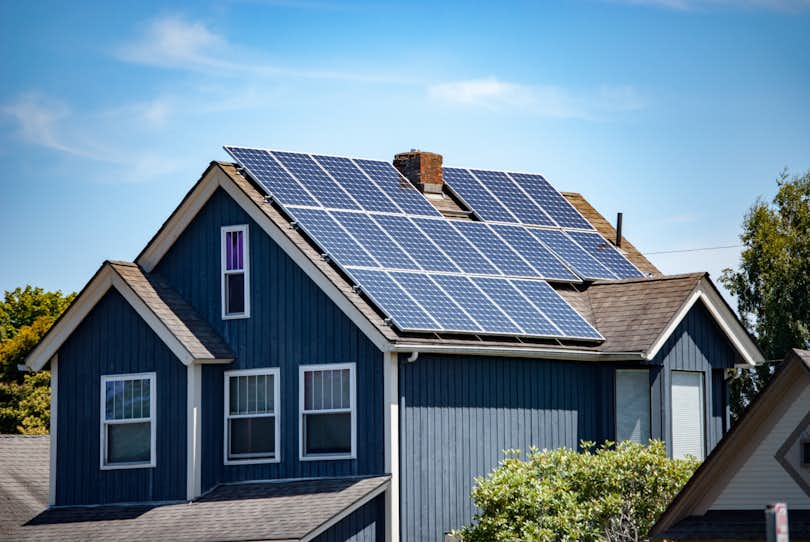
If you're really trying to impact your home's energy use, solar panels are essential. They are a long-term investment but don't necessarily require a large down payment. Most solar companies offer flexible options, from purchasing the panels outright to leasing them over a period. Whichever option you choose will pay dividends not only to the environment but also to your wallet.
With the passage of the Inflation Reduction Act, federal tax cuts on solar panel installation have been extended through the next decade. Under previous legislation, set to expire at the end of 2023, tax credits were capped at 26% for solar systems installed from 2020 to 2022, and 22% for systems installed in 2023.The new bill re-ups the dollar-for-dollar tax savings to 30% of the total installation cost.

